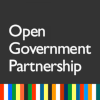End of Commitment Report – Generate open data that is up to date, comparable, accessible and enables the comprehensive analysis of the socio-economic inequality of women and the feminisation of poverty, and ensuring the accessibility and usability of this data
- Action Plan: Action plan – Catalonia, Spain, 2021 – 2023
Overview
Name of Evaluator
Núria Pérez Milán
Member Name
Cataluña (España)
Action PlanAction plans are at the core of a government’s participation in OGP. They are the product of a co-creation process in which government and civil society jointly develop commitments to open governmen... Title
Action plan – Catalonia, Spain, 2021 – 2023
CommitmentOGP commitments are promises for reform co-created by governments and civil society and submitted as part of an action plan. Commitments typically include a description of the problem, concrete action...
Generate open dataBy opening up data and making it sharable and reusable, governments can enable informed debate, better decision making, and the development of innovative new services. Technical specifications: Polici... that is up to date, comparable, and accessible and enables the comprehensive analysis of the socio-economic inequality of women and the feminization of poverty, and ensuring the accessibility and usability of this data
Action
Identify and prioritize the indicators that we already have, backgrounds, and international recommendations that are needed in order to provide a comprehensive overview and analysis of the issue. Identify sources where we can obtain data for the priority indicators (what we have, what we do not have, who the data belongs to, and how open it is). Open up the data, using an automated process, and make sure it is regularly updated or published in real-time, broken down by genderOGP participating governments are bringing gender perspectives to popular policy areas, ensuring diversity in participatory processes, and specifically targeting gender gaps in policies to address gov... More and other intersecting variables (ideally age, diversity/disability, type of family, origin/nationality), and geolocated. Organise and identify data that is common to all municipalities, broken down by gender so that it can be made available on a database. Carry out a communication campaign and other activities to ensure the data is accessible and promote its use on the part of different groups (public administrations, academia, civil society, citizens, schools, etc.).
Problem
Precariousness and gender inequality at every stage of women’s working lives. Socio-economic inequalities with a gender perspective. Intersection of different factors of inequality (age, capacity, gender, origin/nationality). At-risk-of-poverty rate. Feminization of certain sectors. Under-representation of women in certain sectors. Male violence in the workplace. Difficulties in balancing work and family life. Part-time work. Inequalities in areas with greater power and decision-making capacity. Posts with higher levels of responsibility are occupied by men. Pay gap. Pension gap.
Section 1.
Commitment completion
1.1 What was the overall level of progress in the commitment implementation at the time of this assessment?
Substantial
Provide a brief explanation of your answer:
Great progress has been made. Despite around 800 datasets lacking gender information, 220 datasets do include it, whereas 148 do not. This effort has enabled us to obtain a snapshot of the level of data collection on this matter, revealing that approximately a quarter of the datasets include gender information.
Provide evidence that supports and justifies your answer:
1.2 Describe the main external or internal factors that impacted implementation of this commitment and how they were addressed (or not).
Limitations in the collection of official statistical data on gender, especially from an intersectional perspective: One of the main factors affecting the implementation of this commitment was the limited capacity of official statistics to adequately collect and analyze gender data. Experts from various sectors have repeatedly pointed out this deficiency. The open publication of these data fails to achieve an intersectional perspective due to these foundational limitations in data collection.
1.3 Was the commitment implemented as originally planned?
few of the commitment milestones were implemented as planned
Provide a brief explanation of your answer:
It has been partially implemented. Gender information contributes to providing a general view of gender disparity and can potentially infer (though not specifically) socioeconomic inequality and poverty. It is useful but does not specifically address the issue.
Section 2.
Did it open government?
2.1.1. – Did the government disclose more information; improve the quality of the information (new or existing); improve the value of the information; improve the channels to disclose or request information or improve accessibility to information?
Yes
Degree of result:
Major
Explanation: In narrative form, what has been the impact on people or practice.
Contributes to disseminating and promoting datasets with gender information, aiding in the inference of related inequalities.
Provide evidence for your answer:
- Screenshot: Gender equality Dataset
- Screenshot: Dataset information- Gender
- Screenshot: Gender Filtre
2.1.2. – Did the government create new opportunities to seek feedback from citizens/enable participation inform or influence decisions; improve existing channels or spaces to seek feedback from citizens/enable participation/ inform or influence decisions; create or improve capabilities in the government or the public aimed to improve how the government seeks feedback from citizens/enables participation/ or allows for the public to inform or influence decisions?
Not Applicable
2.1.3 Did the government create or improve channels, opportunities or capabilities to hold officials answerable to their actions?
Not Applicable
2.1.4 Other Results
Not Applicable
2.2 Did the commitment address the public policy problem that it intended to address as described in the action plan?
Yes
Provide a brief explanation of your answer:
The lines of action to follow regarding the opening of gender data have been identified. In this regard, the Department of Equality and Feminisms is monitoring and actively participating in the process of opening data with a gender perspective.

Leave a Reply